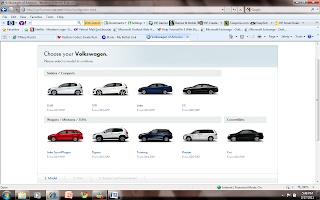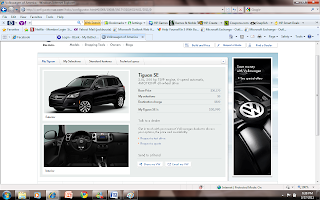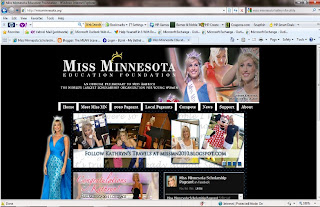It is often I feel like I live in a town of 50 people. Every time I go to the grocery store, the gas station, on a mid-night junk food run or even to the local Red Box, I always see someone I know. I would think that living in a city with 61,919 residents would leave it virtually impossible to run into the same people over and over again but it seems that it is not.
Even though I continue to see the same people over and over again one thing I don’t see is a decline in diversity in Coon Rapids. I have noticed that within the past few years the diversity of our community has been rapidly increasing. As I explored the claritas website I was surprised at how truly informational it was. It has supported the thoughts I had been having about diversity but I did not realize at how many sub-groups there were within my city.
The PRIZM Segmentation System shows the highest number of “New Beginnings” being present in my community. The New Beginnings category explains that these families are young, single adults who are looking for transition. They may be starting over after divorces or changing company locations. The main idea of the New Beginnings category is that it is very ethnically diverse. My thought that Coon Rapids was becoming a much greater diverse community is true. New Beginnings category describes its diversity as having nearly half of the residents in the community as being Hispanic, African-American or Asian. The newly recent families are mainly renters and have had some college background and work mainly jobs in service.
The second highest category that separates my community is the Blue Chip Blues. I found the two highest, New Beginnings and Blue Chip Blues to accurately portray Coon Rapids currently. The diversity is growing rapidly but it still feels as if it is a family oriented community. The Blue-Chip Blues category is filled with midscale, younger families with children. It is a comfortable lifestyle young, ethnically-diverse and spread out families. The residents within this group often have well-paying blue-collar jobs and live in reasonably priced homes. The average income is midscale and most residents in this grouping own their homes.
I found my predictions to perfectly describe my community. I felt like I was in the Blue-Chip Blues group my entire life. My family lived comfortably and worked hard for everything we owned. I attended Coon Rapid High School for all four years of my education and there was not a time that I didn’t feel like I was living in a diversity snow-globe which separated one group of people from another. Coon Rapids hallways separated each diverse group that attended that school and it made it extremely hard to accept that growing diversity when it was so segregated. I mingled with everyone throughout school but reading the description of my community sent me back to high school days, and how nearly half of the residents of the city are from a diverse background.
I have found that with the diversity in Coon Rapids and anywhere around our world have been created by God for a purpose. I firmly believe he places diversity into our lives because he wants us to celebrate all of God’s people. Even if Coon Rapids is a rapidly growing community of diverse people we need to understand and accept it because it is what God has wanted us to always do. I pondered for a long while the thoughts of my community as I explored the website. I thought about my high school days and how I have always grown up with diversity right in front of me. I don’t believe I ever took the time to embrace the fact that God has created so many different people and that he places difficulties and new experiences into our lives to we may embrace them rather than judge them.
Overall, I believe Coon Rapids will continue to grow and continue to become more diverse. I think as it becomes more diverse the people of the city will be able to learn to accept diversity and in the end it diversity will not separate one class from another.
Even though I continue to see the same people over and over again one thing I don’t see is a decline in diversity in Coon Rapids. I have noticed that within the past few years the diversity of our community has been rapidly increasing. As I explored the claritas website I was surprised at how truly informational it was. It has supported the thoughts I had been having about diversity but I did not realize at how many sub-groups there were within my city.
The PRIZM Segmentation System shows the highest number of “New Beginnings” being present in my community. The New Beginnings category explains that these families are young, single adults who are looking for transition. They may be starting over after divorces or changing company locations. The main idea of the New Beginnings category is that it is very ethnically diverse. My thought that Coon Rapids was becoming a much greater diverse community is true. New Beginnings category describes its diversity as having nearly half of the residents in the community as being Hispanic, African-American or Asian. The newly recent families are mainly renters and have had some college background and work mainly jobs in service.
The second highest category that separates my community is the Blue Chip Blues. I found the two highest, New Beginnings and Blue Chip Blues to accurately portray Coon Rapids currently. The diversity is growing rapidly but it still feels as if it is a family oriented community. The Blue-Chip Blues category is filled with midscale, younger families with children. It is a comfortable lifestyle young, ethnically-diverse and spread out families. The residents within this group often have well-paying blue-collar jobs and live in reasonably priced homes. The average income is midscale and most residents in this grouping own their homes.
I found my predictions to perfectly describe my community. I felt like I was in the Blue-Chip Blues group my entire life. My family lived comfortably and worked hard for everything we owned. I attended Coon Rapid High School for all four years of my education and there was not a time that I didn’t feel like I was living in a diversity snow-globe which separated one group of people from another. Coon Rapids hallways separated each diverse group that attended that school and it made it extremely hard to accept that growing diversity when it was so segregated. I mingled with everyone throughout school but reading the description of my community sent me back to high school days, and how nearly half of the residents of the city are from a diverse background.
I have found that with the diversity in Coon Rapids and anywhere around our world have been created by God for a purpose. I firmly believe he places diversity into our lives because he wants us to celebrate all of God’s people. Even if Coon Rapids is a rapidly growing community of diverse people we need to understand and accept it because it is what God has wanted us to always do. I pondered for a long while the thoughts of my community as I explored the website. I thought about my high school days and how I have always grown up with diversity right in front of me. I don’t believe I ever took the time to embrace the fact that God has created so many different people and that he places difficulties and new experiences into our lives to we may embrace them rather than judge them.
Overall, I believe Coon Rapids will continue to grow and continue to become more diverse. I think as it becomes more diverse the people of the city will be able to learn to accept diversity and in the end it diversity will not separate one class from another.
Before taking the VALS 2 survey, I had always considered myself a motivated individual who loves different thrills in life. I love to experience new things, and I enjoy setting a goal and then striving to achieve it. I had never taken the VALS 2 assessment before, but felt that it was able to read exactly the kind of person I considered myself.
I thought that some of the questions were goofy at first. Why would it matter if I want to know how the universe works, or why did they ask a few questions twice? I didn’t analyze the survey when I was taking it, but I was interested to get the results. After I submitted my survey my results showed that I possess a primary type of an “Experiencer” and a secondary type of an “Achiever” which provides a perfect description of me.
As an experiencer I am motivated by self-expression. A new product or fashion excites me, and I find enjoyment in variety like outdoor recreation, social activities, or new conversations. I relate the fact that I want to work in an environment that is new and exciting daily. One unfortunate part of being an experiencer is that I often do spend a large amount of my income on new fashions, entertainment and social events. I don’t place a large emphasis on looking good or material possession, as the survey says, but I do work hard to be able to compensate myself with nice things.
My secondary type, “Achiever”, explains my desire to achieve my goals. Since a young age I have always placed a large emphasis on having a goal-oriented lifestyle, while knowing my career and family will be two of the most important things I will achieve in my lifetime. I think this phrase in the achievers explanation explains me perfectly, “Achiever have goal-oriented lifestyle and a deep commitment to career and family. Their social lives reflect this focus and are structured around family, their place of worship and work.”
Bethel University, and numerous other colleges, could benefit greatly from using these assessments. One assessment really targets the community demographic and breaks down every area of family life, household income, purchases, places these demographics shop, and so on, into organized categories. The PRIZM survey allows for marketers of these colleges to target exactly what they’re looking for while altering their marketing efforts to fit other demographics that are in the same area. These universities can learn effective marketing tactics by using the PRIZM survey site to hone in on characteristics that will make their tactics successful while expanding their overall new-student demographic areas just by using this site.
The VALS 2 survey site is great for the universities because of its consulting and consumer research service that it provides. It allows Bethel and other universities to connect with consumers on a greater level because of the sites richly textured profiles. Since the survey provides current research that focuses on how consumers around the world make decisions about their lives, the universities will be able tailor their marketing efforts based on the results of the survey.
Overall, both surveys provide excellent information into the lives of consumers and their habits and/or choices. We can use these surveys to gain insight into how we develop marketing tactics. These surveys can allow us to create successful marketing tactics based on the results of the demographic survey as well as the VALS 2 survey.




